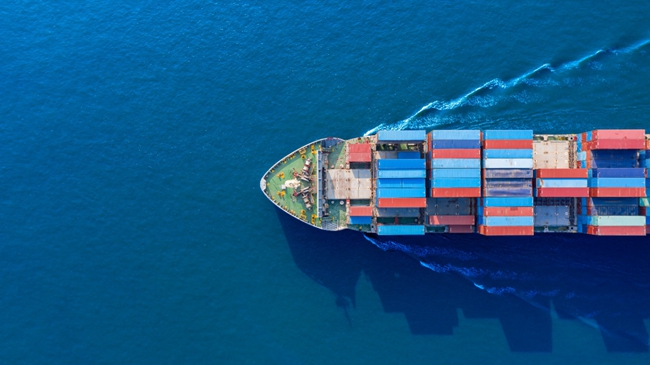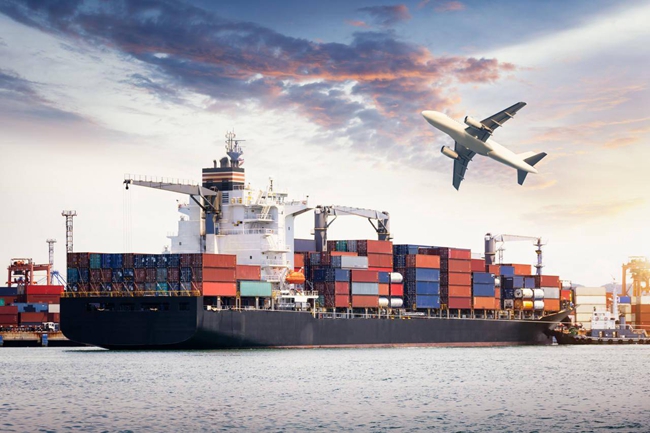On June 17, China North Stock Exchange company Air China Ocean Shipping disclosed performance forecast announcement. By the company's financial management department preliminary accounting, it is expected that in the first half of 2024, the company can realize the net profit attributable to shareholders of listed companies rose year-on-year in the same direction, reaching 60 million yuan ~ 80 million yuan, the growth range is expected to be 263.27% ~ 384.36%.
Air China Ocean Shipping net profit exponential growth, external factors thanks to the international shipping prices soared. At the beginning of this year to June 11, the Baltic Sea Index (BDI) average value of 1821.25 points, compared with the same period last year, the average value of BDI 1161.25 points rose 56.84%, of which the Baltic-Panamax Index (BPI) four lines of the beginning of the year to June 11, the average charter rate of 14,507.16 U.S. dollars / day, compared with the same period last year, 10,631.82 U.S. dollars / day The increase is 36.45%. Especially recently, according to Freightos, a global digital freight platform, as of June 10, the price of sea freight containers on the routes from East Asia to the U.S. West Coast and East Coast climbed to US$5,888 per 40-foot container (FEU) and US$7,516 per FEU, respectively, a jump of 17% and 12% from the previous week. The Baltic Sea Index has risen to 1948.00 on June 17, up 0% on the day, 3.45% on the week and 5.64% on the month. China Export Container Freight Index (CCFI) June 14 week has risen to 1733.47, weekly increase of 8.85%, monthly increase of 32.14%. BDI index is the bulk of raw materials freight index, bulk shipping to transport steel, pulp, grains, coal, mineral ores, phosphorite, bauxite, and other livelihood materials and industrial raw materials. Therefore, the operating conditions of the bulk shipping industry are closely related to the global economic boom and bust, as well as the high and low prices of raw materials. Therefore, the Baltic index can be regarded as a leading indicator of the economy. Many industry insiders expect that international shipping prices will remain high in the short term.

A few days ago, cross-border e-commerce platform Dunhuang.com Group Logistics Supply Chain Vice President Liu Shuo Lake said that in the past 2 months, due to the Red Sea situation continues to be tense, the global port congestion, a large number of container ships bypassing, the transportation distance and transport time lengthened, container and ship turnover rate slipped, the loss of sea freight capacity is quite a lot. Although the Council adopted a ceasefire resolution in Gaza on June 10, a few days have passed, the war in Gaza remains, and the Palestinian and Israeli sides continue to fight. This has stimulated the recent rebound in international shipping prices. At present, the international parties concerned are still actively coordinating, and it is expected that there will be intensive negotiations next, and the hope of realizing a ceasefire in Gaza still exists, but from the substantial rebound in international shipping prices after June 10, the market is not optimistic about the prospects for a ceasefire in Gaza, and the impact of the situation in the Red Sea on the international shipping market will thus also continue.
Moreover, the Gaza war has not stopped, the northern hemisphere's summer heat and to the global shipping prices "add fuel to the fire".
Into May, including India, Mexico and other places around the world appeared more than 50 ℃ of hot weather. India's capital New Delhi suffered unprecedented extreme heat, the temperature soared to 52.3 ℃. According to the latest data released by the U.S. National Centers for Environmental Information, in the first four months of 2024, global temperatures hit a new high for the same period in 175 years. In particular, the recent extreme weather in Southeast Asia has made the world's second-largest container port, the Port of Singapore, is facing serious congestion problems. As the world's second largest container port, the Port of Singapore has become the new focus of congestion. Data from analysts show that container ships currently need to wait up to seven days to berth in Singapore, with a backlog of container ships with a total capacity of up to 450,000 TEUs, far exceeding the highs during the outbreak of the new crown epidemic. However, there are also consulting firm Linerlytica said that the degree of congestion in the port of Singapore in the intensification of the current Port Klang, Malaysia, the United Arab Emirates, Jebel Ali Port, South Korea's Port of Busan, the number of ships in the port in the forefront, but far less than the number of the peak period in 2021, and therefore said that Asia's big congestion of the ship is still too early.
A study released in May by the World Weather Attribution Coalition noted that canal water shortages will become more frequent due to global warming. The study analyzes that under the current global warming of 1.2 degrees Celsius, the incidence of a canal water shortage crisis on the scale of 2023 would be one in 40 years, and that even during a normal El Niño cycle, precipitation in the canal region would be reduced by 8 per cent. The World Weather Causation Alliance also notes that as global warming continues to worsen, canal water scarcity cycles will become even more unpredictable in the future. Global shipping is also inevitably impacted by droughts in many places as a result of global warming. Currently 90% of global trade is carried by sea. Extreme weather disasters caused by warming oceans will cause serious damage to shipping routes and ports. Some industry insiders say that globally, 2024 is likely to be the hottest year in history, and as the northern hemisphere enters summer, shipping that has already been in disarray from the Red Sea to the Panama Canal is likely to be impacted again due to the extreme weather that has hit the shipping lanes.

In addition, the situation in the Red Sea has led to many shipping routes bypassed, extending the time and cost of shipping, as well as increasing port congestion further aggravated the already tense container market predicament, resulting in container occupancy time longer than the normal cycle. From a global perspective, the current Asian-European, U.S. West and other major routes container supply is tight, the turnover efficiency of containers in various ports to reach the limit. At present, Maersk, MSC and other large shipping companies containers are relatively tight, the port yards in the container is also particularly low.
This wave of shipping market also brought fire to China CIMC. The company said that the current global container transportation uncertainty risk increases, customers willingness to prepare the box obviously increased. The company's container manufacturing business production and sales volume rebounded year-on-year. Among them, in the first quarter, the company's cumulative sales of standard dry containers totaled 494,400 TEUs, up about 499.27% from 82,500 TEUs in the same period last year. Clarkson data show that since 2024, the new ships launched and delivered about 1.2 million TEU, accounting for about 4% of the existing container capacity above. Global capacity supply is tight, and in mid-May, only 0.7% of the world's ships were idle.
After July global shipping will enter the traditional summer shipping season, superimposed on the current Red Sea crisis is still continuing, according to the current development trend, the global shipping prices in the short term the possibility of a significant downward adjustment is relatively low.

